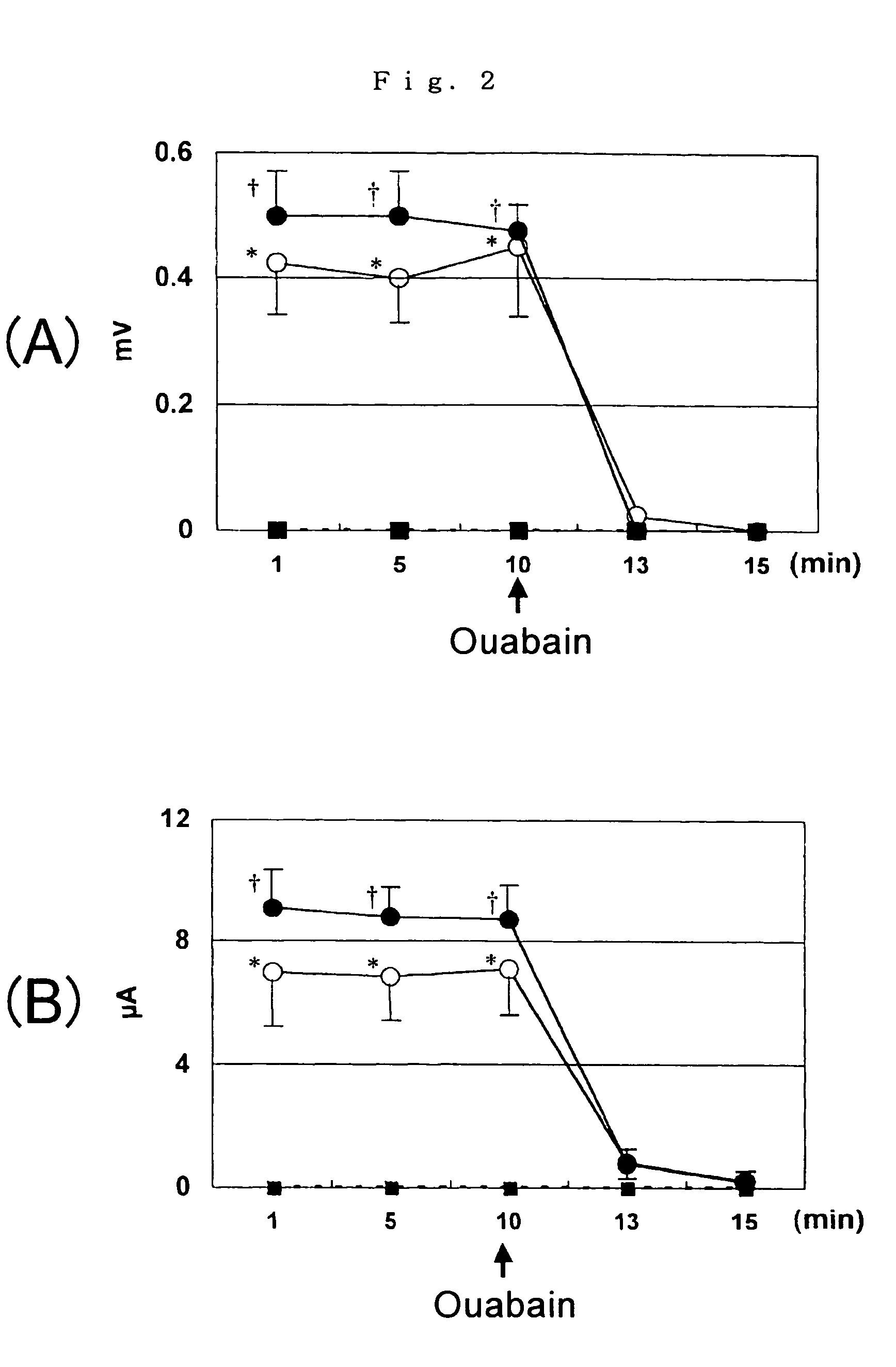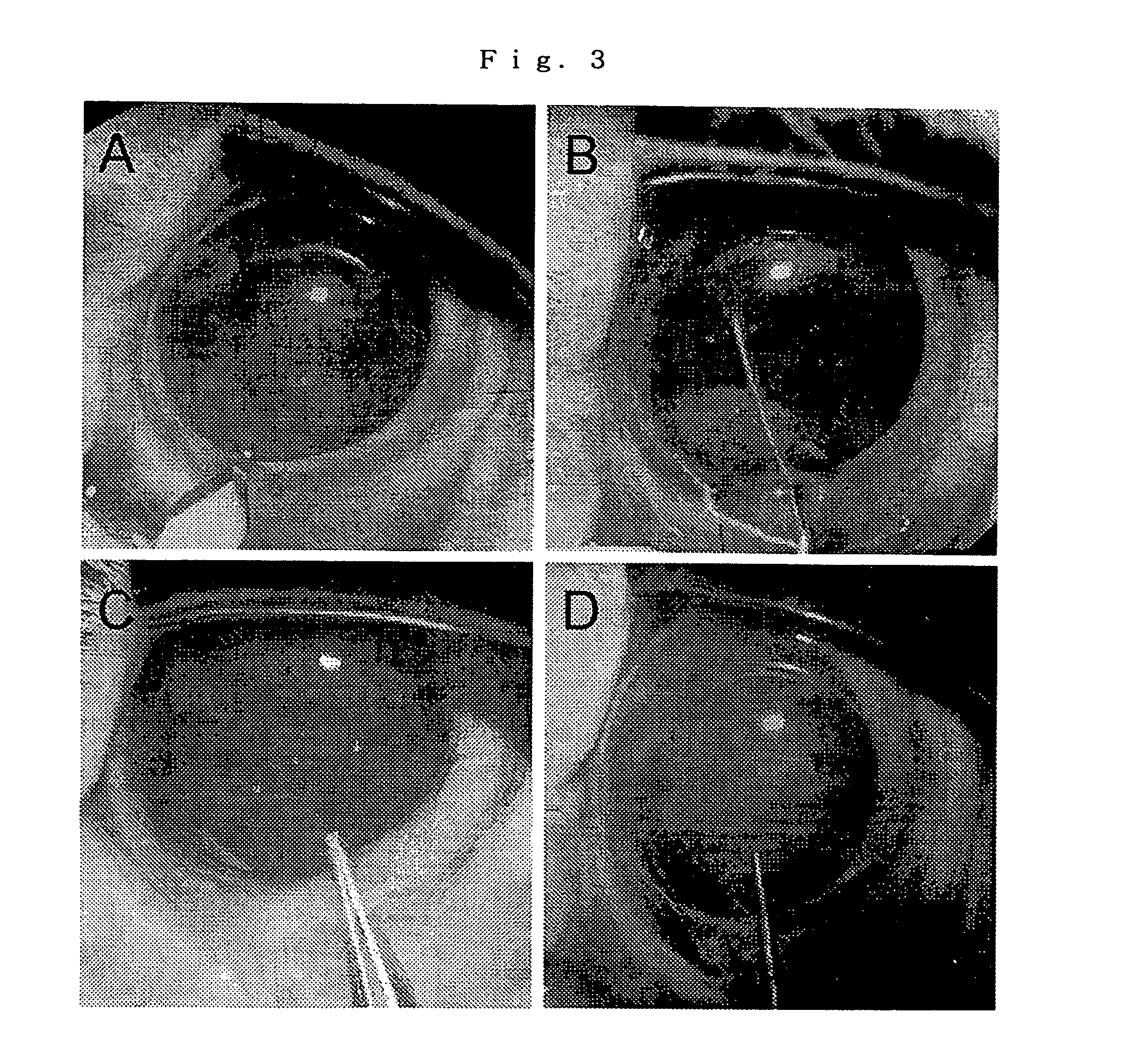Laminate of cultured human corneal endothelial cells layer and method for manufacturing same
a technology of corneal endothelial cells and cultured human cornea, which is applied in the field of cultured human corneal endothelial cells layer and a method for manufacturing the same, can solve the problems of tissue compatibility, acute shortage of corneal donors, and self-limiting function of the cornea, so as to avoid immunologic rejection and prevent fibroblast-like cell infiltration
- Summary
- Abstract
- Description
- Claims
- Application Information
AI Technical Summary
Benefits of technology
Problems solved by technology
Method used
Image
Examples
examples
[0044]The present invention is further described below in view of examples.
[0045][Media and Culture Conditions for HCECs]
[0046]All the primary cultures and serial passages of HCECs were done in growth medium consisting of low-glucose Dulbecco's modified Eagle's medium (DMEM) supplemented with 15% fetal bovine serum (FBS), 2.5 mg / L fungizone (Gibco BRL, Grand Island, N.Y.), 2.5 mg / L doxycycline, and 2 ng / mL basic fibroblast growth factor (bFGF; Sigma, St. Louis, Mo.). Cells were maintained in a humidified incubator at 37° C. and 10% CO2. Medium used to produce bovine extracellular matrix (ECM) consisted of low-glucose DMEM with 10% FBS, 5% calf serum (Gibco BRL), 2.5 mg / L fungizone, 2.5 mg / L doxycycline, 2 ng / mL bFGF, and 2% dextran (Sigma). Media for the HCEC and bovine CEC cultures were changed every 2-3 days.
[0047][Primary Culture of HCECs]
[0048]Primary HCEC cultures were made as described elsewhere (Miyata K, Drake J, Osakabe Y, et al. Cornea. 2001;20:59-63). Briefly, cultures we...
PUM
| Property | Measurement | Unit |
|---|---|---|
| thickness | aaaaa | aaaaa |
| isoelectric point | aaaaa | aaaaa |
| isoelectric point | aaaaa | aaaaa |
Abstract
Description
Claims
Application Information
 Login to View More
Login to View More - R&D
- Intellectual Property
- Life Sciences
- Materials
- Tech Scout
- Unparalleled Data Quality
- Higher Quality Content
- 60% Fewer Hallucinations
Browse by: Latest US Patents, China's latest patents, Technical Efficacy Thesaurus, Application Domain, Technology Topic, Popular Technical Reports.
© 2025 PatSnap. All rights reserved.Legal|Privacy policy|Modern Slavery Act Transparency Statement|Sitemap|About US| Contact US: help@patsnap.com



